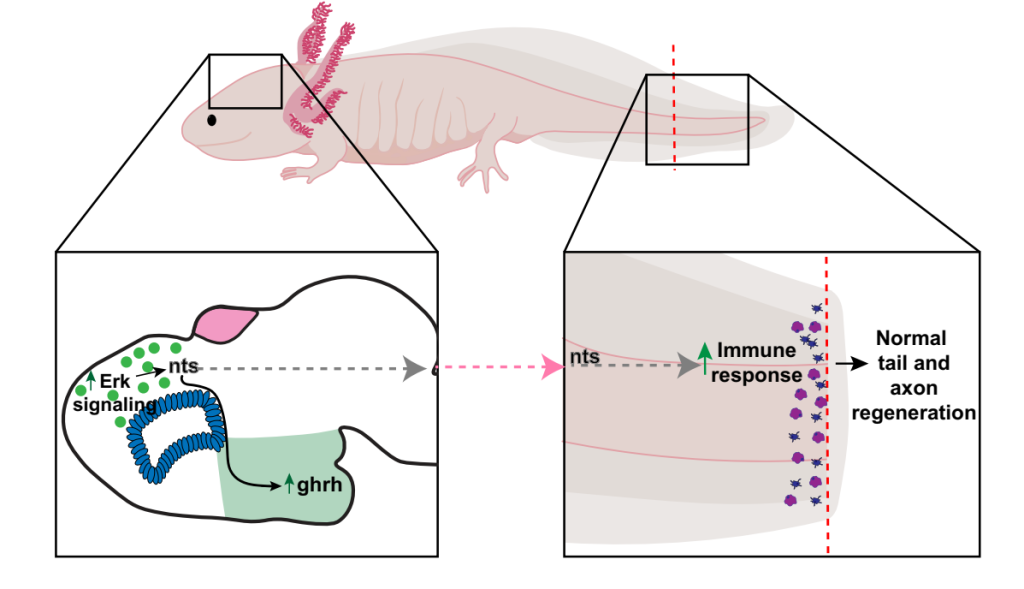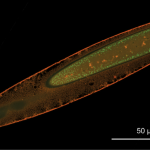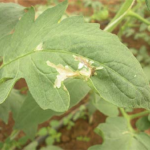The axolotl—a charismatic amphibian known for its ability to regenerate entire limbs, tails, spinal cords, and even parts of its heart—has long fascinated scientists. But a new study published in 2024 uncovers a surprising twist: neuronal activation in the brain plays a key role in initiating tail regeneration.
This finding opens up exciting new questions in the fields of neuroscience, regenerative medicine, and vertebrate evolution.

Key Findings of the Study
Researchers used a combination of whole-brain calcium imaging, optogenetics, and pharmacological tools to show that:
- Neuronal activity in the telencephalon (a brain region analogous to the vertebrate forebrain) is essential for tail regeneration.
- When this brain activity was inhibited, axolotls failed to regenerate their tails.
- Conversely, activating neurons in the brain promoted regeneration, even in contexts where healing typically doesn’t occur.
- Brain activity seems to influence immune cell recruitment and positional cues at the site of injury.
This study, conducted in Ambystoma mexicanum (the Mexican axolotl), is the first to directly link brain activity to appendage regeneration in vertebrates.
What Makes Axolotls Special?
Axolotls are unique because they:
- Maintain larval features throughout life (neoteny)
- Exhibit scar-free healing
- Regenerate limbs, jaws, spinal cords, hearts, and even portions of their brain
- Show minimal aging and are resistant to many cancers
This makes them a model organism for studying complex regeneration mechanisms relevant to humans.
Mechanism at a Glance
The study proposes a brain-to-tail regeneration pathway:
- Injury triggers sensory signals sent to the brain
- Neurons in the telencephalon become activated
- These neurons regulate downstream immune and positional signals
- Regenerative cells at the injury site proliferate and pattern correctly
- Functional tail structures regrow—including muscles, nerves, and spinal tissue
This top-down coordination may explain why regeneration is so precise and integrated in axolotls.
Implications for Regenerative Medicine
The concept that the brain can influence peripheral tissue regeneration could lead to breakthroughs in:
- Treating spinal cord injuries
- Boosting wound healing in humans
- Designing brain-stimulating therapies to promote regeneration
- Understanding the neuroimmune crosstalk involved in tissue repair
It also raises intriguing questions:
- Do humans retain latent neural control over healing?
- Can we reawaken regenerative circuits using brain modulation?
Reference
Walker, S. E., Yu, K., Burgess, S., & Echeverri, K. (2025). Neuronal activation in the axolotl brain promotes tail regeneration. npj Regenerative Medicine, 10(1), 22.






